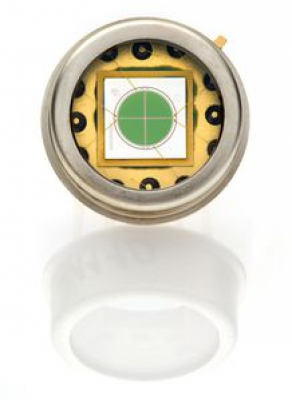

Since the holes generated by the avalanche pass through the drift zone at a certain speed, when the avalanche current reaches the maximum value, the induction current does not reach the maximum value. As the avalanche current increases, the induced current of the external circuit continues to increase. During the transit time, a current appears in the external circuit.

After the carriers enter the drift region, the transition process begins. In this way, the current produced by the avalanche is one-quarter cycle fall behind the alternating voltage in time, or 90 ° lag behind in the phase. And only when the electric field decreases below the avalanche electric field, that is, after the alternating voltage enters the negative half cycle, the avalanche current will begin to decrease. As a result, the number of electrons and holes will increase constantly when the electric field is larger than the avalanche electric field. Therefore, even if the alternating voltage has fallen from the maximum value, a large number of electrons and holes have been generated before, which can continuously generate new electrons and holes through collisions. This is because the electrons and holes generated by the avalanche phenomenon are not only related to the electric field intensity, but also to the number of carriers that collided with each other.Īn example of an incoming electron impact ionizing to produce a new electron-hole pair When the alternating voltage gradually decreases from the maximum value, the avalanche current continues to increase and reaches a maximum value when the alternating voltage is reduced to zero. With the increase of the alternating voltage, the avalanche current entering the drift region will increase rapidly. The electrons are quickly swept into the N + region by the electric field, while the holes enter the drift region at a certain speed. If an alternating voltage is added on the reverse voltage of the diode, the electric field in the avalanche region is large enough to cause impact ionization to generate a large number of electron-hole pairs in the positive half cycle of the alternating voltage. III Generation Process of Microwave Oscillations In addition to the two main operating modes described above, avalanche diodes can also operate in harmonic, parametric, static, and thermal modes. This mode works at a lower frequency, but the output power and efficiency are much larger.
The working process of this mode is to generate a voltage over excitation in the circuit to trigger the device so that the diode barrier region is filled with electron-hole plasma, causing the internal electric field of the device to suddenly decrease, and the plasma will gradually drift out of the barrier region. Its basic working principle is to use collision ionization and transit time effects of carriers in the PN junctions to produce negative resistance at microwave frequencies, thereby generating oscillations.Īnother important working mode is the trapped plasma avalanche triggered transit time (TRAPATT) mode. The noise mainly comes from the irregular generation of electrons and holes during the avalanche multiplication process, which is similar to shot noise.Īvalanche diodes can oscillate in a variety of modes, including the impact avalanche and transit time (IMPATT) mode. The avalanche diode is a kind of negative resistance device with large output power and big noise. This feature can be used to make high-reverse-voltage diodes. The carriers increase much more quickly and the reverse current increases sharply, and the avalanche breakdown occurs in the PN junction. When the reverse voltage increases to a certain value, the multiplication situation is like an avalanche occurs on a steep snow-covered mountain. This is the multiplication effect of carriers. The newly generated electrons and holes also move in the opposite direction, regaining energy and generating electron-hole pairs through collision. The electrons and holes moving in the crystal will constantly collide with the atoms, and when the energy of the electrons and holes is large enough, the electrons in the covalent bond can be excited to form a free electron-hole pair. In this way, the energy obtained by the electrons and holes passing through the space charge region will increase under the action of the electric field. In a PN junction with a low material doping concentration, the electric field in the space charge region increases as the reverse voltage of the PN junction increases. III Generation Process of Microwave OscillationsĤ.


 0 kommentar(er)
0 kommentar(er)
